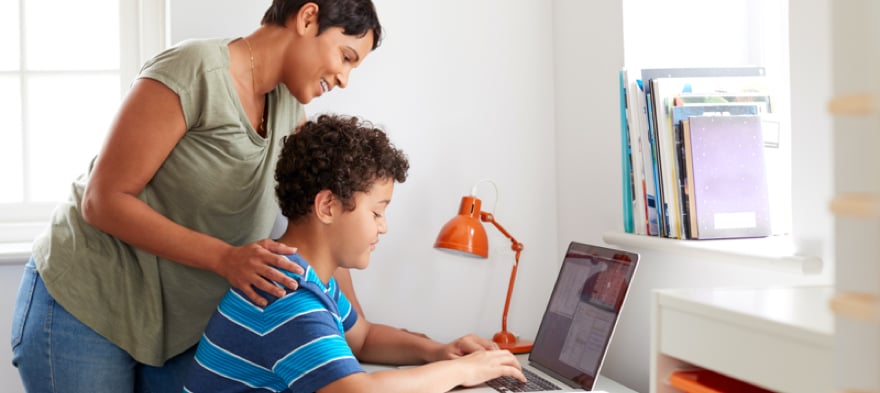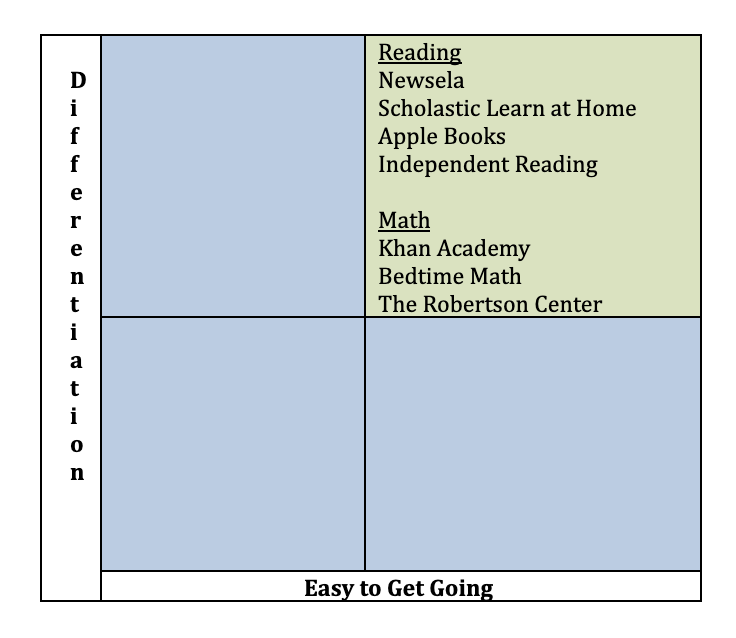
Mar 23, 2020 12:00:00 AM
I’ve seen a number of articles in recent days about whether schools and parents should prioritize remote learning while schools are closed. As a former teacher, principal, and from my time working on improving New Orleans schools, I’ve seen too much data about what missing school can do for long-term educational outcomes—most especially for students who are behind academically.
I’m definitely in the distance learning camp! Like millions of parents, [pullquote position="right"]I found myself faced with the sudden challenge of juggling work and facilitating my children’s remote learning experience[/pullquote] a week ago.
Many public schools in our city (including the one where my husband teaches) are launching remote or distance learning this week. As others follow, here are some takeaways from our personal experience from five days of learning at home to help parents and schools as they navigate trying to make the most of this time.
The teacher in me wanted to re-create everything my kids would be losing through school cancellation. I was quickly overwhelmed by the resources out there, so I took a step back and instead focused a few broad goals for learning at home:
Your goals may be different—and that's OK! Suppressing years of results orientation and SMART goal-making was difficult for me at first. But I settled on these broad, simple guidelines to help make our daily planning easier.
There are a lot of resources and activities out there. A number of online learning platforms are sharing for free right now, there are authors reading and drawing with kids during most hours of the day, and there is no end to the online mini-courses you can take (thank you, Debbie Allen!). I am incredibly appreciative AND I was quickly overwhelmed by everything available.
I spent much of last weekend clicking on websites and reading blog posts until I realized I had not actually done any planning. Taking a step back and deciding what I hoped to accomplish helped, and so did thinking about two criteria to narrow down all of my choices.
After my 2-day experience down the resource rabbit hole, here’s what worked for us last week:

Good old fashioned independent reading time is easily differentiated and executed for 20-30 minutes each day. We used Newsela and Scholastic Learn at Home for nonfiction texts to share and discuss together. Both of these resources offer leveled texts to accommodate my different learners.
We also turned our bedtime novel into shared reading during the day, using our various Apple devices and the Apple Books app. This allowed opportunities for both kids to access more advanced text and enjoy a good story.
We have been using the Bedtime Math app for a while, inspired by this NPR story. It offers problems for toddlers to upper elementary students, all centered around a very short story. We are also using a free resource provided daily by The Robertson Center, which offers leveled “thinking work” for grades K-3. Khan Academy provides our kids grade-level appropriate math instruction and practice and became a part of our school’s remote learning plan as well as something the kids can do on their own.
There are lots of great resources out there and I’m sure we’re missing some good ones! [pullquote]Knowing what we needed to meet our home learning goals helped me figure out how to keep planning to a minimum.[/pullquote]
As a parent, being connected to the parents in my children’s school made the transition to distance learning workable for two reasons.
[pullquote]My overall takeaway from this week is that remote learning can work.[/pullquote] Our household definitely benefitted from tech resources and having two educators in charge. But thinking through goals and criteria for choosing resources and activities can be a framework for anyone trying to make school at home meaningful for kids. And the chances of success of any remote learning plan increase substantially if communication flows to and between parents.
Maggie Runyan-Shefa is an independent consultant and executive coach. Formerly the co-CEO of New Schools for New Orleans, Maggie oversaw NSNO’s school investment, school support, human capital investments, internal operations and organizational culture. In her time at NSNO Maggie helped to fund or launch 28 schools, doubled the size of NSNO’s human capital portfolio and was a chief architect of the Common Core programming offered to 33 schools across the city. Before NSNO, Maggie founded and led KIPP STAR College Prep Charter School in Harlem, New York City and she is a graduate of the KIPP School Leadership Program. Under her leadership, KIPP STAR was among the highest performing open-enrollment public schools in Harlem and its graduates have gained acceptance into some of our nation’s finest college preparatory high schools and colleges. She was recognized by the Robin Hood Foundation with its Hero’s Award in 2004. Maggie is a former Teach For America corps member (Mississippi Delta ’97) and holds a B.A. in international affairs from the George Washington University and a M.P.A. from the Harvard Kennedy School.
The story you tell yourself about your own math ability tends to become true. This isn’t some Oprah aphorism about attracting what you want from the universe. Well, I guess it kind of is, but...
If you have a child with disabilities, you’re not alone: According to the latest data, over 7 million American schoolchildren — 14% of all students ages 3-21 — are classified as eligible for special...
The fight for educational equity has never been just about schools. The real North Star for this work is providing opportunities for each child to thrive into adulthood. This means that our advocacy...
Your donations support the voices who challenge decision makers to provide the learning opportunities all children need to thrive.
Ed Post is the flagship website platform of brightbeam, a 501(c3) network of education activists and influencers demanding a better education and a brighter future for every child.
© 2020–2024 brightbeam. All rights reserved.
Leave a Comment